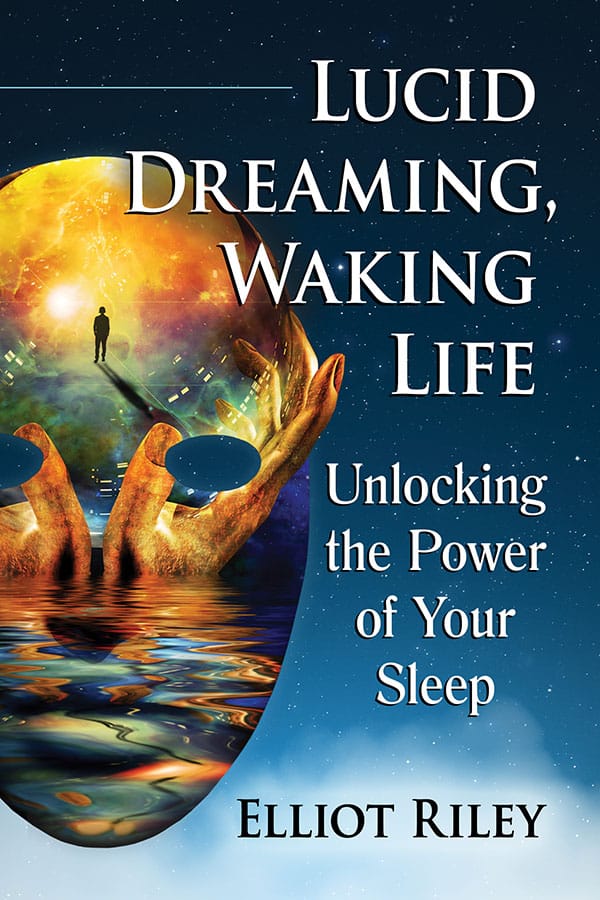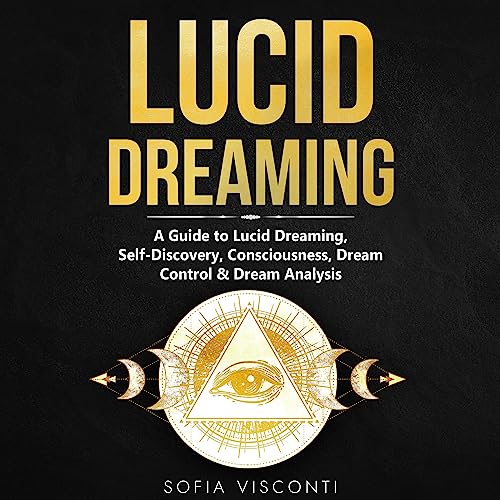Lucid dreaming is a fascinating phenomenon where the dreamer becomes aware of being in a dream while asleep, gaining the ability to control and shape their dreams. Imagine flying through the skies, exploring mystical landscapes, or meeting your favorite fictional characters. The idea of controlling dreams has captivated human minds for centuries, and recent research has shed light on the science and potential benefits of lucid dreaming. In this article, we will explore the techniques to unlock the power of lucid dreaming, delve into its benefits, and discuss ethical considerations surrounding this extraordinary experience.
The Science of Lucid Dreaming
Understanding the science behind lucid dreaming is crucial to appreciate the significance of this unique mental state. Sleep is composed of several stages, including non-rapid eye movement (NREM) and rapid eye movement (REM) phases. Dreams primarily occur during the REM phase, where brain activity is similar to wakefulness, albeit with reduced muscle activity.
What Happens During Lucid Dreams
Lucid dreams occur when the brain transitions into a state of self-awareness during REM sleep. The frontal lobes, responsible for rational thought, are activated during lucid dreaming, allowing dreamers to recognize that they are in a dream and take control of the experience. This contrasts with regular dreams, where we are passive observers, often oblivious to the dream’s nature.
Lucid Dreaming Frequency and Personal Variations
Some individuals naturally experience lucid dreams, while others need to practice techniques to achieve them regularly. Various factors influence lucid dreaming frequency, including genetics, sleep habits, and personal predisposition. Common barriers to lucid dreaming include poor dream recall and lack of self-awareness.
Unveiling the Benefits of Lucid Dreaming
Lucid dreaming isn’t just a thrilling adventure; it offers a plethora of psychological, emotional, and even spiritual benefits.
Psychological and Emotional Healing
Lucid dreaming provides a safe environment to confront and overcome nightmares and traumas. By facing these subconscious fears, individuals can gain emotional healing and reduce anxiety and stress in their waking lives.
Enhancing Creativity and Problem-Solving
Lucid dreaming taps into the subconscious mind, unleashing creativity and aiding problem-solving. Artists, writers, and inventors have reported finding inspiration and novel ideas in their lucid dreams.
Spiritual and Self-Discovery Aspects
For some, lucid dreaming is a spiritual journey, allowing them to connect with their inner selves and explore transpersonal experiences beyond the limitations of ordinary consciousness.
Developing the Skills for Lucid Dreaming
Unlocking the power of lucid dreaming requires practice and dedication. The following techniques can help you develop the skills for lucid dreaming:
Keeping a Dream Journal
Keep a journal by your bedside and record your dreams as soon as you wake up. This practice enhances dream recall and helps you recognize recurring dream themes and symbols.
Reality Checks and Awareness Techniques
Perform reality checks throughout the day to cultivate self-awareness. Question your reality by asking yourself whether you are dreaming or awake, and look for unusual signs such as distorted mirrors or flying objects.
Mnemonic Induction of Lucid Dreams (MILD)
MILD is a popular technique involving visualization and affirmations. Before sleep, repeat to yourself that you will become lucid in your dreams and visualize yourself recognizing the dream state.
Wake-Induced Lucid Dreaming (WILD)
WILD involves transitioning from a waking state directly into a lucid dream. This method requires relaxation, concentration, and patience.
Other Induction Methods
Explore additional techniques like the Wake-Back-to-Bed (WBTB) method, where you wake up in the middle of the night and then go back to sleep with the intention of lucid dreaming. You can also use lucid dreaming aids, such as masks that detect REM sleep and trigger light cues.
Navigating the Lucid Dreaming Experience

Once you’ve achieved lucidity in your dreams, it’s essential to navigate the experience effectively:
Stabilizing and Maintaining Lucidity
Lucid dreams can be fleeting, so use stabilizing techniques like rubbing your hands together or spinning in the dream to maintain lucidity. Engaging your senses, like touching objects or feeling the ground, can help prolong the dream.
The Power of Intention and Belief
Your thoughts and beliefs influence the dream’s outcome. By setting positive intentions and believing in your abilities, you can actively shape your dream narrative and environment.
Interacting with the Dream Environment
Engage with the dream environment and its inhabitants. You can have conversations with dream characters, ask questions, or request insights.
Overcoming Challenges and Potential Risks
While lucid dreaming can be immensely rewarding, it’s essential to be aware of potential challenges and risks:
Dealing with Lucid Dreaming Nightmares
Lucid nightmares can be intense, but remember that you have control. Instead of running from fear, confront it, and transform it into something positive. Visualization techniques can be helpful in reshaping the dream narrative.
Avoiding Sleep Deprivation
Balance lucid dreaming with a healthy sleep routine. Avoid spending too much time lucid dreaming at the expense of restful sleep, as it can lead to sleep deprivation.
Maintaining Mental Stability
For some individuals, lucid dreams can be emotionally intense. Employ grounding techniques to remain mentally stable and differentiate between dream and reality.
Lucid Dreaming and Beyond: Real-Life Applications
Lucid dreaming’s benefits extend beyond the dream realm, positively impacting our waking lives:
Creative Inspiration and Problem-Solving
Lucid dreams can unlock the door to creative breakthroughs and help you find solutions to real-life challenges.
Personal Growth and Self-Exploration
Through lucid dreaming, you can gain profound insights into your subconscious mind, fostering personal growth and self-awareness.
Healing and Therapy Applications
Lucid dreaming is increasingly used as a therapeutic tool for treating anxiety, PTSD, and other psychological disorders.
Spiritual and Transcendent Experiences
For those on a spiritual journey, lucid dreaming can offer transcendental and mystical experiences that enrich their understanding of the universe and their place within it.
Ethical Considerations in Lucid Dreaming
While lucid dreaming can be a source of empowerment, it’s essential to approach it ethically:
Respecting the Boundaries of the Dream World
Lucid dreaming is a personal experience, and it’s crucial to respect the dream characters and environments you encounter.
Moral Implications of Manipulating Dreams
Manipulating dream scenarios involving other dream characters raises ethical questions. Remember that dream characters may represent aspects of your subconscious mind or archetypal symbols.
Utilizing Lucid Dreaming Responsibly
Use lucid dreaming responsibly, focusing on personal growth and empowerment rather than harmful or exploitative actions.
FAQs about Lucid Dreaming
Can anyone learn to lucid dream?
Yes, with practice and dedication, most individuals can learn to lucid dream. Some may naturally experience lucid dreams more frequently, but anyone can improve their lucid dreaming abilities with the right techniques.
What are the potential risks of lucid dreaming?
The main risks of lucid dreaming include sleep deprivation if excessively practiced, and intense emotional experiences during lucid nightmares. However, these risks can be managed with proper guidance and self-awareness.
Can lucid dreaming be used for problem-solving and learning?
Yes, lucid dreaming can enhance problem-solving abilities and boost creativity by accessing the subconscious mind and exploring new perspectives on issues.
How can lucid dreaming benefit personal growth?
Lucid dreaming allows individuals to gain insights into their subconscious minds, facilitating personal growth, self-awareness, and emotional healing.
Are there any scientific studies supporting the benefits of lucid dreaming?
Yes, numerous scientific studies have explored the psychological and therapeutic benefits of lucid dreaming, validating its potential as a powerful tool for personal development.
Can lucid dreaming enhance creativity and artistic abilities?
Absolutely, many artists, writers, and musicians credit lucid dreaming for inspiring their work and sparking creativity.
Is it possible to have too many lucid dreams?
While lucid dreaming can be beneficial, spending an excessive amount of time in lucid dreams may interfere with restful sleep, leading to sleep disturbances and potential health issues.
Can lucid dreaming be used to explore past memories?
Lucid dreaming may offer a unique opportunity to revisit past memories or experiences, but it is essential to approach such exploration with caution and mindfulness.
How can one differentiate between reality and lucid dreams?
Differentiating between reality and lucid dreams can be challenging, but maintaining a dream journal, practicing reality checks, and grounding techniques can help discern the two states.
Are there cultural and historical references to lucid dreaming?
Yes, lucid dreaming has been a topic of interest and exploration in various cultures throughout history, often associated with spiritual and mystical experiences.
Conclusion
Lucid dreaming offers a remarkable opportunity to explore the depths of our consciousness and harness the power of our minds. By understanding the science behind lucid dreaming, practicing the techniques, and approaching it responsibly, we can unlock the vashop over to this websitet potential that lies within our dreams. Embrace the journey of lucid dreaming, and watch as it shapes not only your dreams but also your reality.

Welcome to my corner of the digital world. I am Evelyn Rivers, a passionate and dedicated professional psychologist with a profound fascination for the realm of dreams, their meanings, and their immense potential for emotional and spiritual healing. Through this website, I aim to illuminate the path to self-awareness, growth, and enlightenment, driven by the power of dreams and their significance in our lives. More about the author

